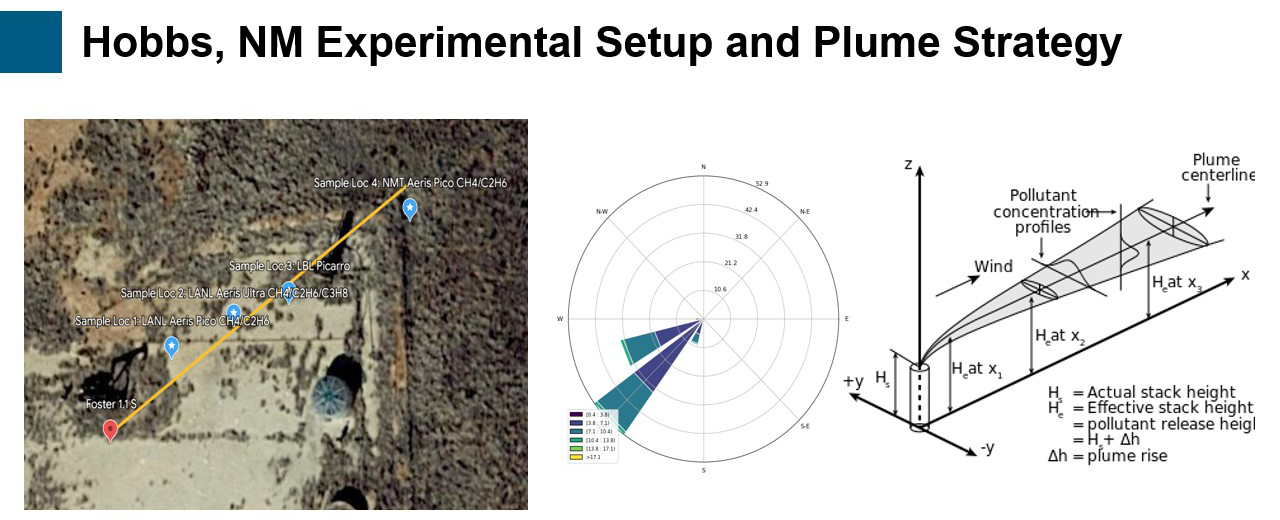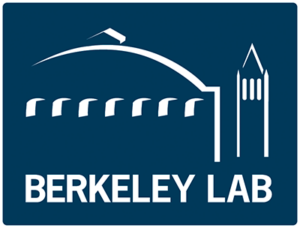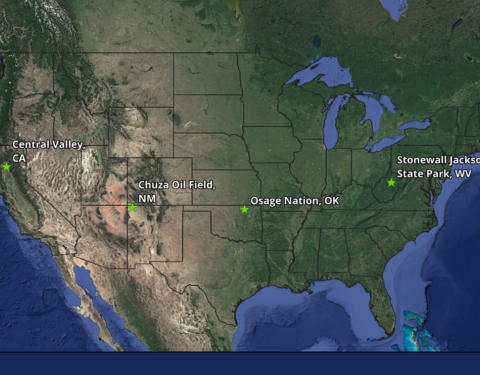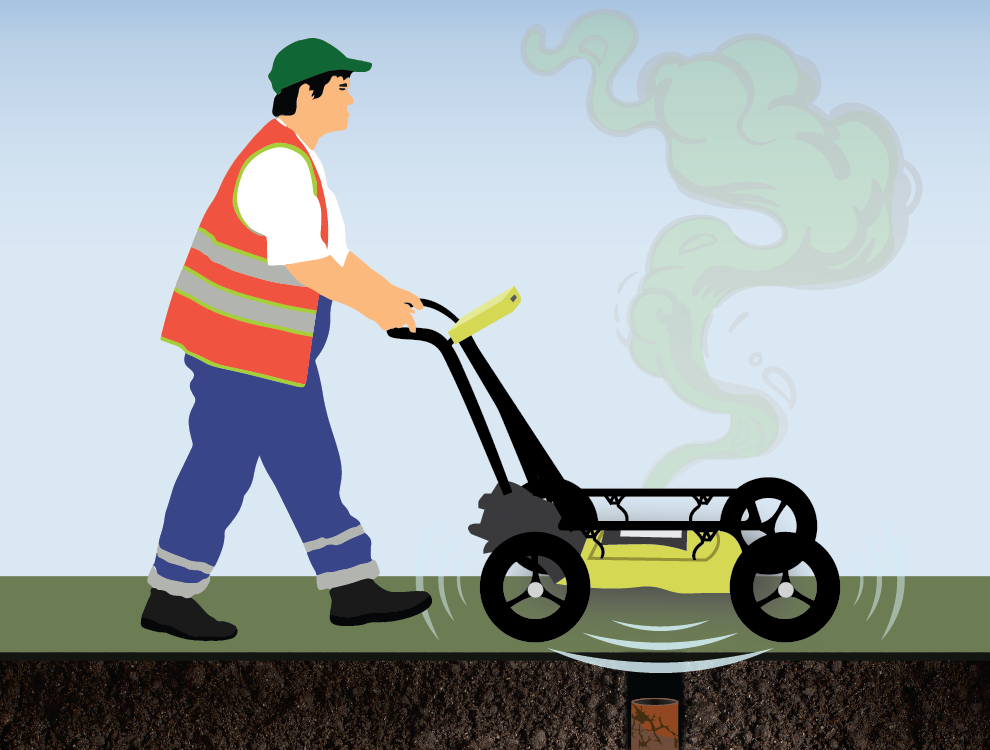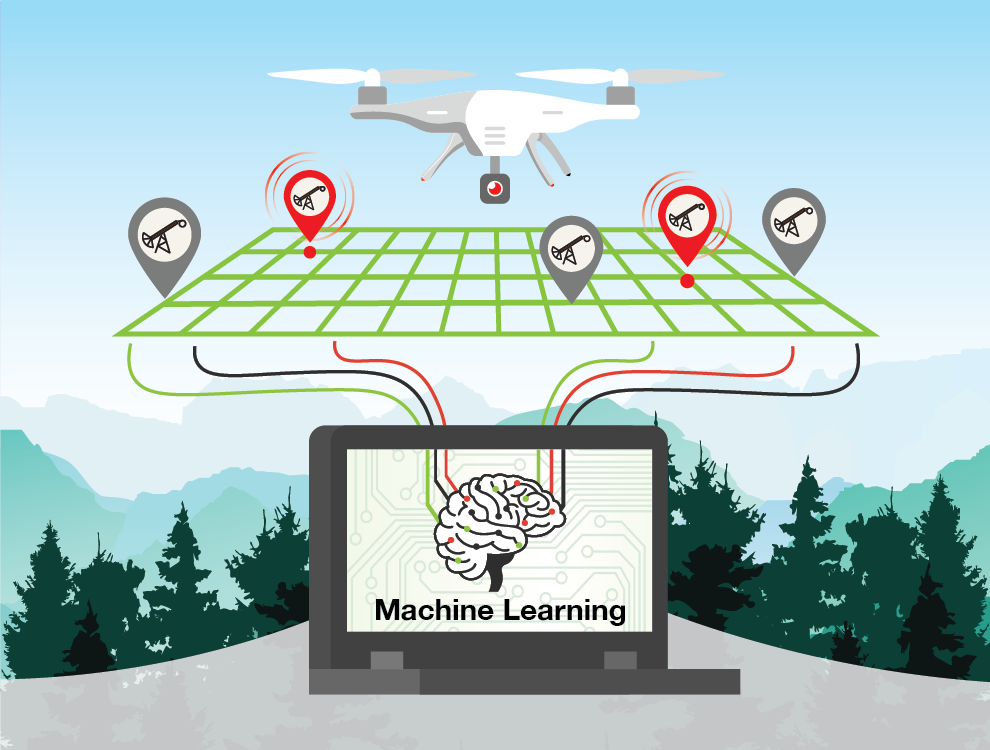Overview
Advance existing state-of-the-art technologies and approaches and/or develop new methane detection and quantification technologies designed to cost effectively and efficiently find (identify) and assess (characterize) methane emissions from UOWs so that they can be prioritized by Federal, State and Tribal Agencies (Stakeholders) to be mitigated. Given the significance of methane to demonstrating successful implementation of this program, methane detection and quantification has its own work package but makes direct contributions to identification (WP 2) and characterization (WP 4) technologies.
The ecosystem of wells is very diverse across the nation and heterogeneous surface and subsurface conditions across oil and gas basins are observed where UOWs are located. Determination of methane emissions from these wells is key to quantifying greenhouse gas impacts of UOWs and is a key metric of evaluating successful well plugging. We currently have no established methodology for making methane emission measurements in different geological and environmental settings and importantly as a function of scale.
Objective
#1: Baseline evaluation of existing methane emission quantification technologies, approaches and promising new techniques.
#2: Develop advanced methane quantification technologies and techniques that meet the needs of the States, Federal Lands, and Tribal Lands agencies.
#3: Field demonstration of efficient, accurate and cost-effective technologies and methods developed in this work package to the States, Federal Lands and Tribal Lands agencies.
Short Term Impact:
(1) evaluation of state-of-the-art technologies and promising new techniques used to detect methane (and co-emitted gas) leaks and quantify methane emissions from UOWs, (2) Field Validation of state of the art technologies in California or other to State of focus (Alaska, California, Colorado, Oklahoma, Texas), and (3) Submit a paper following the work described in the white paper: “How to estimate O&G well leak rates from near field concentration and wind observations?”
Long Term Impact:
(1) The approach to estimate methane emissions from concentrations and wind measurements has been validated for emissions rates in the range of kg/hr and at large distances from sources (>10s m). We will conduct additional testing for smaller emission rates (g/hr) at closer range (<10m) through collaborative control release experiments between LBL and LANL coupled with Gaussian plume analysis to calibrate our method. We will also improve our overall uncertainty quantification of our approach using the field data.
Accomplishments
Research Products
TBD
Broad classification for screening prioritize well plugging time and costs of leak quantification for screening to prioritize plugging.
Plume monitoring and gaussian plume model analysis to infer emissions.
Field set up, wind data and plume model used in our Hobbs, NM orphan well campaign in April 2023.
Contacts
Sebastien Biraud
Lawrence Berkeley National Laboratory
scbiraud@lbl.gov
Manvendra Dubey
Los Alamos National Lab
dubey@lanl.gov



